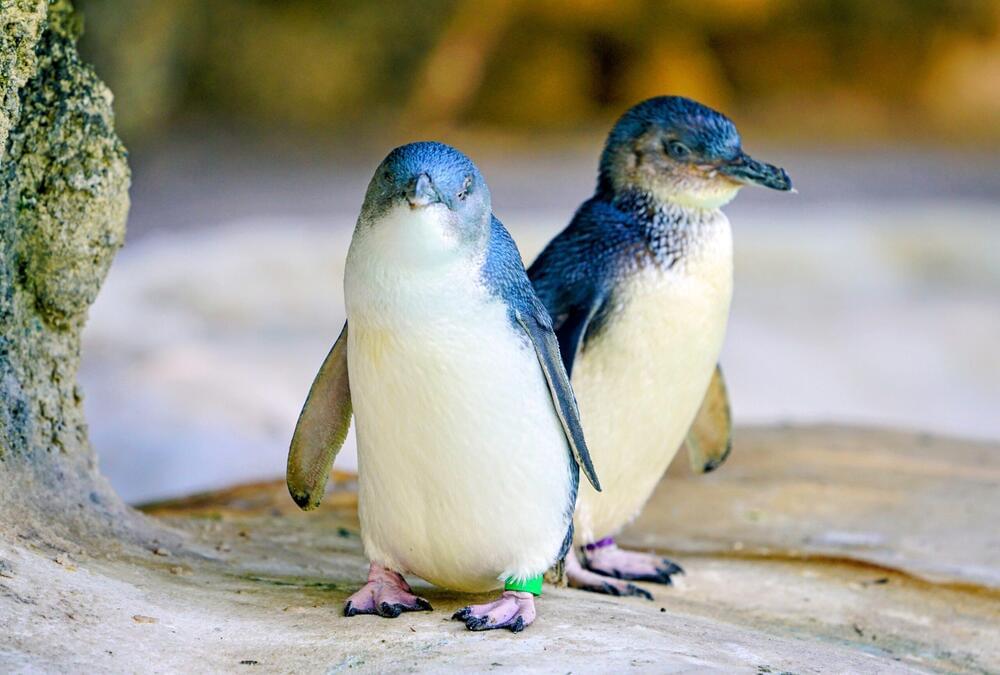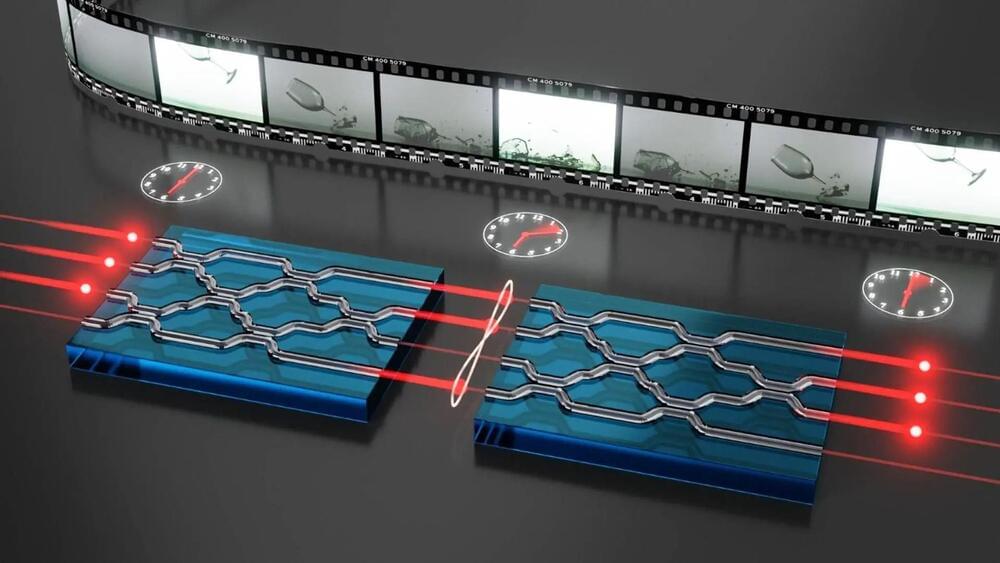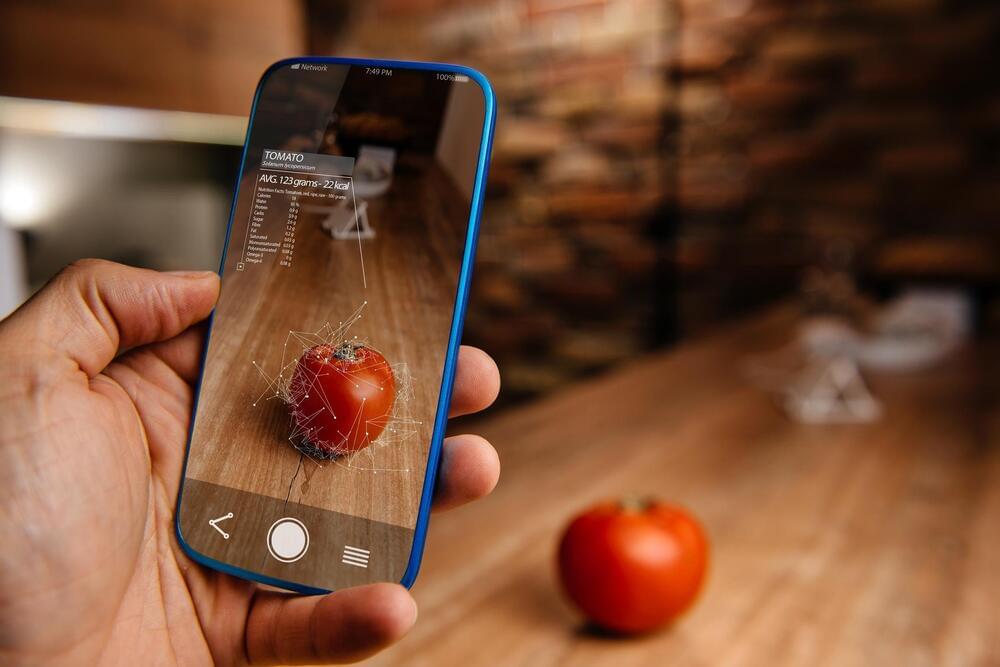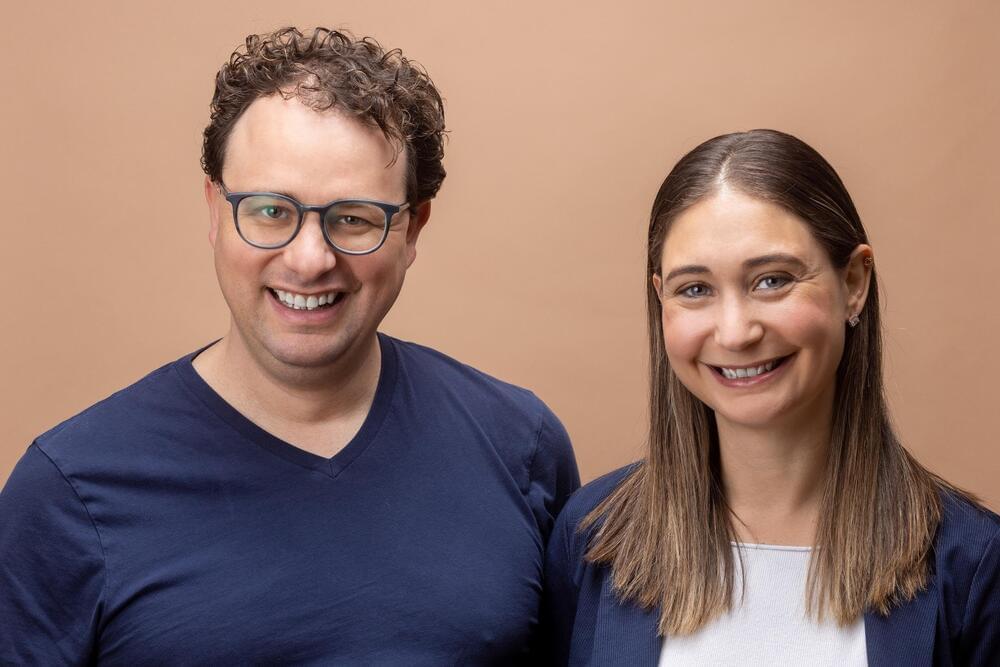Animals aren’t the only ones with the gift of gab. But what are plants actually “saying” to each other? The answer could help feed the world.
Page 1775
Jul 11, 2023
Meet Lisa — India’s First Odia AI News Anchor Launched By OTV
Posted by Shubham Ghosh Roy in categories: internet, robotics/AI

– India’s First Odia AI News Anchor Launched By OTV
#otvnews.
OdishaTV is Odisha’s no 1 News Channel. OTV being the first private satellite TV channel in Odisha carries the onus of charting a course that behoves its pioneering efforts.
Accordingly its charter objectives are FREE, FAIR and UNBIASED. OTV delivers reliable information across all platforms: TV, Internet and Mobile.
Continue reading “Meet Lisa — India’s First Odia AI News Anchor Launched By OTV” »
Jul 11, 2023
Starlink Satellites Are Flooding Sky with Radiation- Why is That a Problem?
Posted by Shubham Ghosh Roy in categories: internet, physics, satellites
This post is also available in:  עברית (Hebrew)
עברית (Hebrew)
There are currently thousands of Starlink satellites that belong to SpaceX, and they are causing a lot of disputes in the science and astronomy communities. They are disrupting scientific research by causing streaks in deep space photos, and according to a new study are also dumping “unintended electromagnetic radiation” into space, which could be a major problem for Earth-bound astronauts.
The study published in Astronomy & Astrophysics states that the satellites in low Earth orbit could be muddling or even drowning out signals from deep space that radio astronomers search for.
Jul 11, 2023
Little penguins that once lived in New Zealand were ridiculously cute
Posted by Shubham Ghosh Roy in category: futurism
In a groundbreaking discovery, scientists have identified a new extinct species of small penguins that lived in New Zealand three million years ago. These creatures, described as “ridiculously cute,” are ancestors of little penguins that continue to thrive today along the coasts of Australia, Tasmania, and New Zealand.
After careful examination of two fossilized skulls – one belonging to an adult, the other to a juvenile – the researchers named the new species Wilson’s little penguin. The study was published last month in the Journal of Paleontology.
According to Bob Yirka of Phys.org, the newly discovered species represents the oldest-known extinct little penguin. Given that the researchers have only the skulls of the extinct animals at their disposal – not their entire skeletons – certain details about the Wilson’s little penguins remain uncertain.
Jul 11, 2023
With Expansion Microscopy, Scientists See Fundamental Cellular Processes
Posted by Shubham Ghosh Roy in categories: biotech/medical, genetics
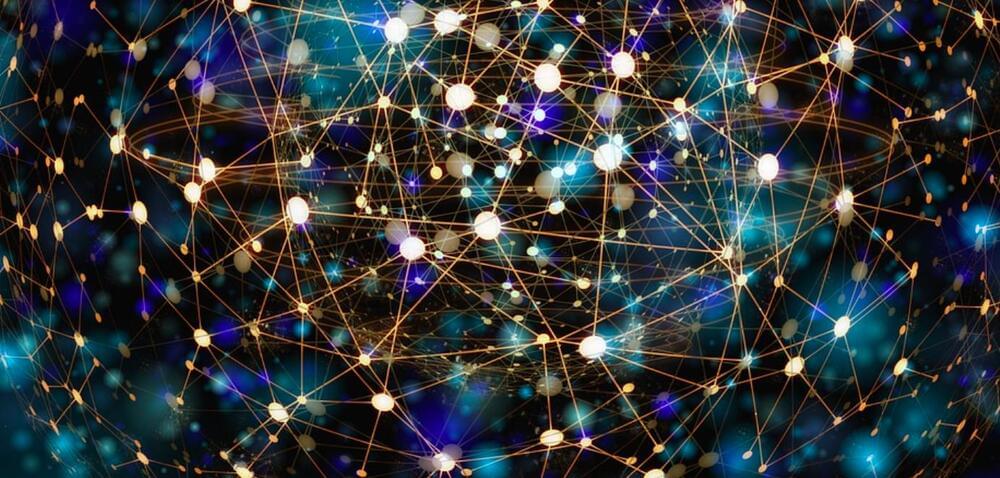
A cell’s identity is based on the genes it expresses, and scientists have been studying gene expression mechanisms for many years. But the process involves molecules that are too small to see, until the recent development of a technique called expansion microscopy. With expansion microscopy, scientists preserve tissue, and then enlarge it; this can make very small structures much easier to see. Researchers have now improved the technology, and even after increasing the size of zebrafish embryonic cell nuclei by 4,000 times, they were able to see the influence of individual molecules on gene expression. The findings, which have enhanced our understanding of gene regulation, have been reported in Science.
With this technique, investigators can now visualize the fundamental processes of the cell that form the basis of life. “We can see processes that we could only imagine before,” said co-senior study author Antonio Giraldez, Ph.D., Fergus F. Wallace Professor of Genetics at Yale School of Medicine.
Jul 11, 2023
3 Human Super Talents AI Will Not Replace
Posted by Shubham Ghosh Roy in categories: business, robotics/AI
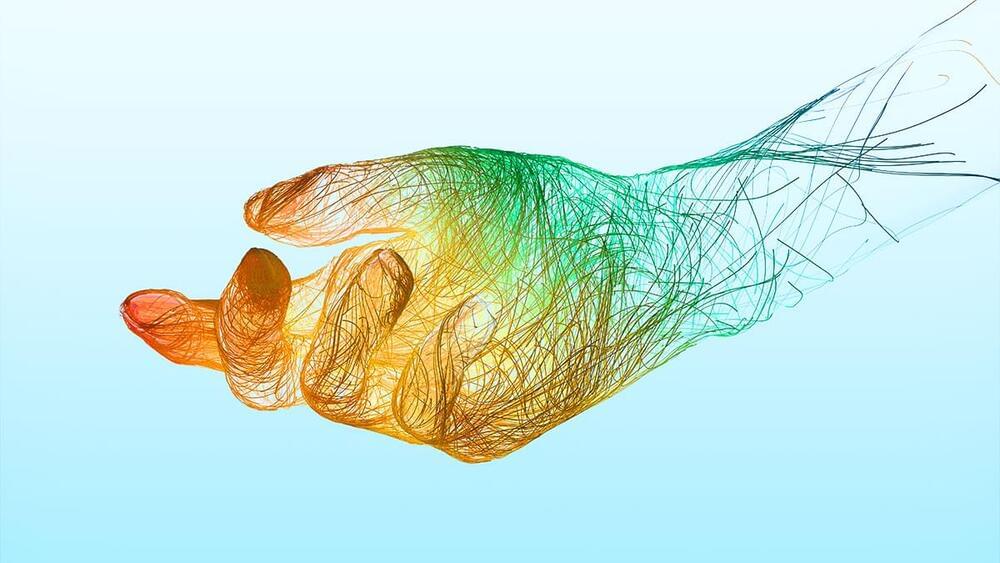
Page-utils class= article-utils—vertical hide-for-print data-js-target= page-utils data-id= tag: blogs.harvardbusiness.org, 2007/03/31:999.357452 data-title=3 Human Super Talents AI Will Not Replace data-url=/2023/05/3-human-super-talents-ai-will-not-replace data-topic= Career planning data-authors= Tomas Chamorro-Premuzic; Reece Akhtar data-content-type= Ascend data-content-image=/resources/images/article_assets/2023/05/A_May23_29_AI-human_1197242446-383x215.jpg data-summary=
Stay curious, practice humility, and focus on others.
Jul 11, 2023
Grape Seed Proanthocyanidins Did Not Raise NAD (Test Results)
Posted by Mike Lustgarten in categories: biotech/medical, genetics
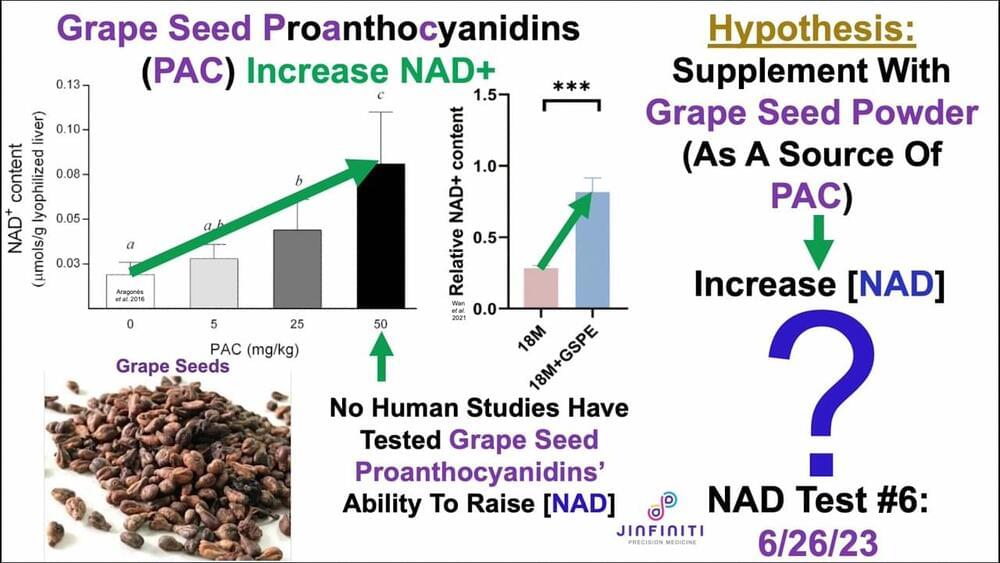
Join us on Patreon! https://www.patreon.com/MichaelLustgartenPhD
Discount Links:
NAD+ Quantification: https://www.jinfiniti.com/intracellular-nad-test/
Use Code: ConquerAging At Checkout.
Continue reading “Grape Seed Proanthocyanidins Did Not Raise NAD (Test Results)” »
Jul 11, 2023
Time Reversal Photonics Experiment Resolves Quantum Paradox
Posted by Paul Battista in categories: computing, particle physics, quantum physics
It seems quantum mechanics and thermodynamics cannot be true simultaneously. In a new publication, University of Twente researchers use photons in an optical chip to demonstrate how both theories can be true at the same time.
In quantum mechanics, time can be reversed and information is always preserved. That is, one can always find back the previous state of particles. It was long unknown how this could be true at the same time as thermodynamics. There, time has a direction and information can also be lost. “Just think of two photographs that you put in the sun for too long, after a while you can no longer distinguish them,” explains author Jelmer Renema.
There was already a theoretical solution to this quantum puzzle and even an experiment with atoms, but now the University of Twente (UT) researchers have also demonstrated it with photons. “Photons have the advantage that it is quite easy to reverse time with them,” explains Renema. In the experiment, the researchers used an optical chip with channels through which the photons could pass. At first, they could determine exactly how many photons there were in each channel, but after that, the photons shuffled positions.
Jul 11, 2023
The Future Of AI—And Everything Else—Is Hybrid
Posted by Gemechu Taye in categories: robotics/AI, space
Qualcomm recently released a white paper titled, “The Future of AI is Hybrid.” In the paper, they outline a clear case that for AI to develop to its maximum capabilities, it needs to be processed both on the cloud and the edge. Computing at the edge would improve issues like cost, energy use, reliability, latency issues, privacy—all of the things that make scaling and growing a technology difficult. And they’re right: for AI to optimize fully, it needs more than one partner, more than one solution. But the greater lesson here is: that’s true for all technology moving forward.
When we hear the term “hybrid,” many of us think of hybrid cars—cars that run on both gasoline and electricity. We in the tech space eventually grabbed that term to refer to things like hybrid cloud —a situation where companies may process some of their data on the public cloud, private cloud, or data center in some type of mix. The goal in creating these hybrid models in technology was the same as it was with hybrid cars—to reduce energy consumption, improve costs, enhance performance.
The hybrid cars grew in popularity because they allowed users the enjoy the best qualities of both types of cars—gas and electric. Gas engines allow the hybrid to refuel quickly and move longer distances before needing fuel. The electric side helps cut emissions and save money. A similar concept is true for AI. AI needs somewhere powerful and stable for model training and inference, which require huge amounts of space for processing complex workloads. That’s where the cloud comes in. At the same time, AI also needs to happen fast. For it to be useful, it needs to process closer to where the action actually happens—the edge of a mobile device.
Jul 11, 2023
Claude 2.0, Anthropic’s Latest ChatGPT Rival, Is Here — And This Time, You Can Try It
Posted by Gemechu Taye in categories: business, mathematics, robotics/AI
AI startup Anthropic has released its next major model – and this time, you can see for yourself how it compares to other AI standouts such as OpenAI’s ChatGPT or Inflection’s Pi. Anthropic announced on Tuesday that it’s released Claude 2, a large-language model that the company said showed improvement across several key benchmarks that include coding, math and reasoning skills, while producing fewer harmful answers.
Claude 2 is more widely available in its second major iteration. Anthropic launched a new beta-test website for general users to register in the U.S. and U.K. – claude.ai – while opening up the new model to businesses by API at the same price they paid for Anthropic’s previous,… More.
New model Claude 2.0 is better at coding, math and reasoning, CEO Dario Amodei said. Unlike its predecessor, it’s available for general consumer use.


